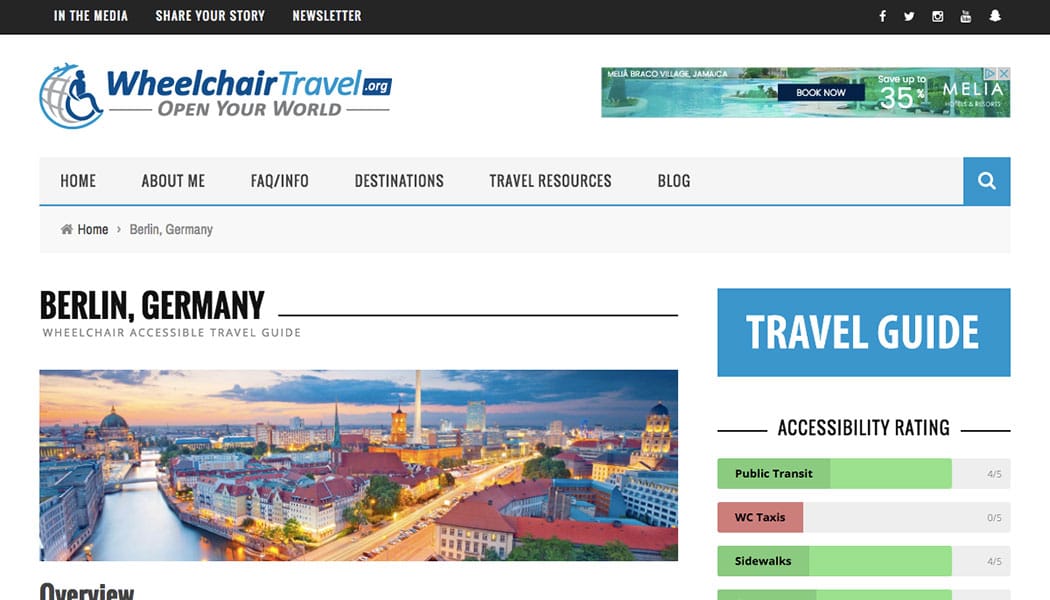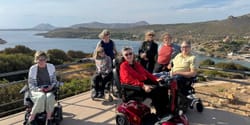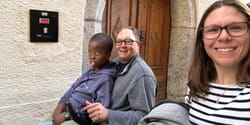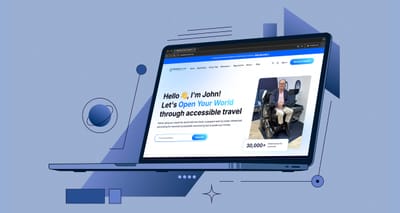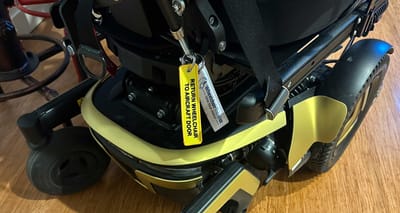Hello, Accessible Travelers!
I launched WheelchairTravel.org in March 2015 as a humble collection of my travel stories. That was all I intended it to be. But as the site has grown in scope and size, I’ve made several cosmetic transformations to its design and structure.
The current design (version 2.0), unveiled in April, gave the site a fresh coat of paint and has hopefully made it more user-friendly. But that was just the first step.
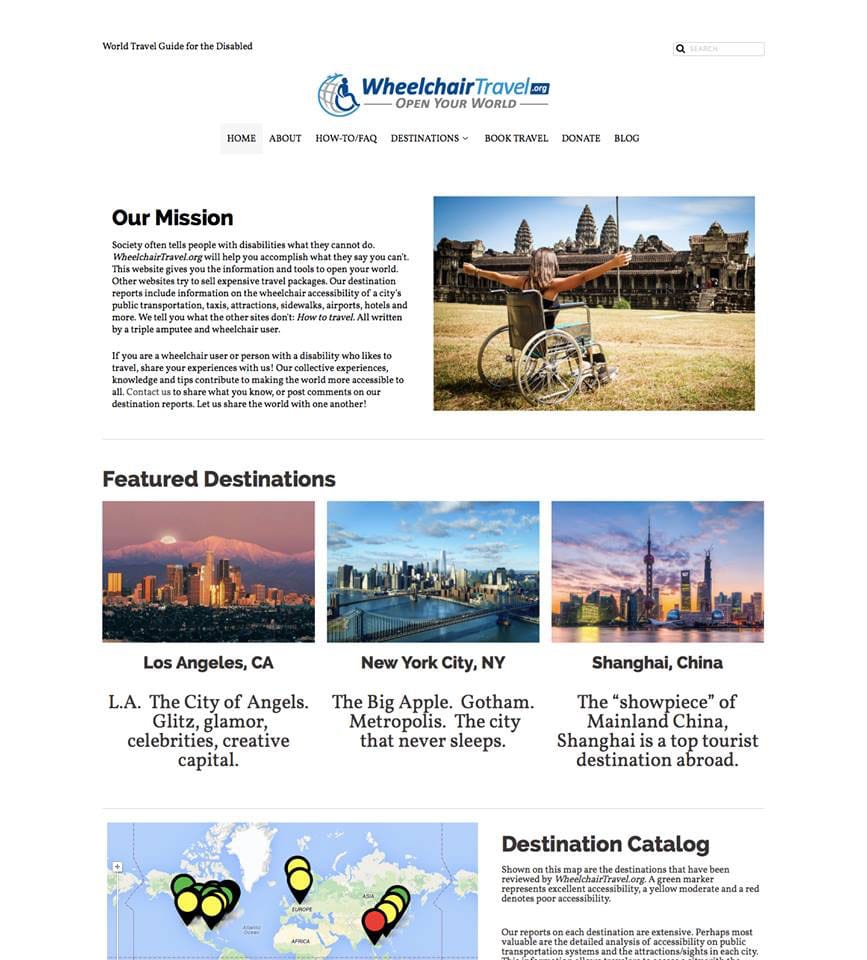
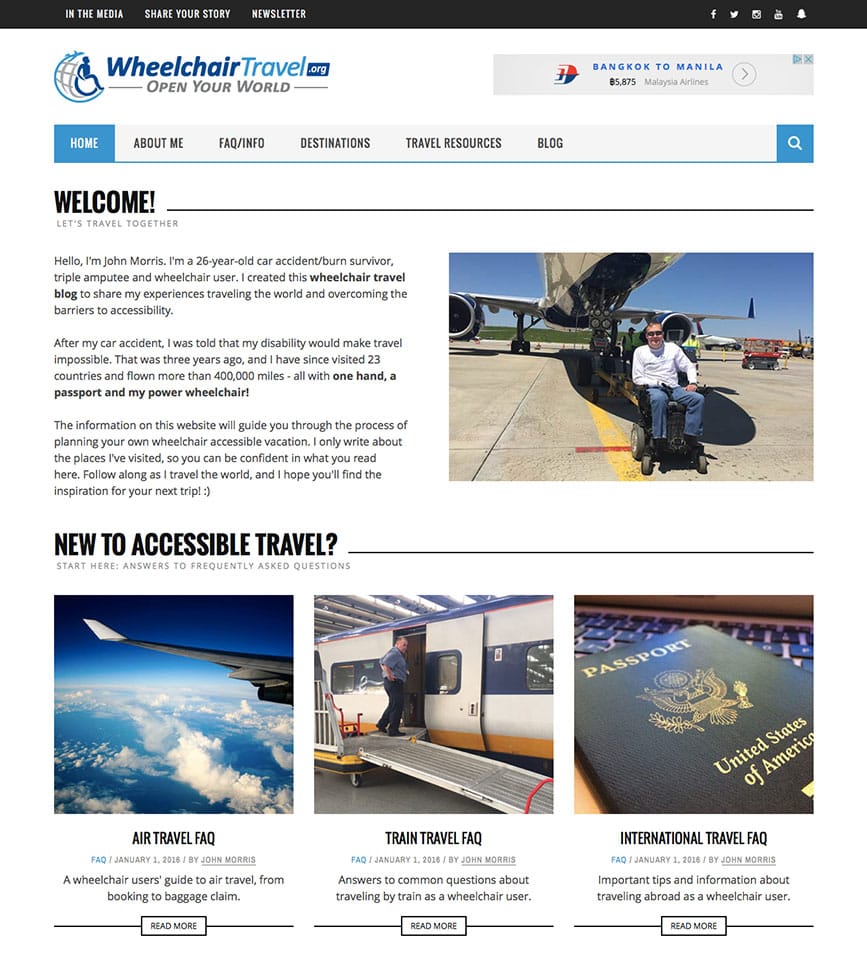
The wheelchair accessible travel guides and accessible travel FAQs are the most important – and most useful – components of this website. So many of you are using the information contained there to open your world. I am so excited by that!
But those sections have become very much a patchwork quilt of different formats and designs. This is something I’ve been working to correct this month, and I’d like to share some of the changes that are in progress.
Accessible Travel Guides
There are three different styles of travel guides floating around. The first is the original – a single-page travel guide that takes forever to load and makes you scroll for ages. There are only a few of those left. It’s not very accessible, which is why I transitioned to a multi-page structure.
The multi-page guides, with sections (pages) for attractions & sights, public transportation, hotels, taxis, etc., were designed for version 1.0 of the website. Since the April release of version 2.0, they’ve become a pain to navigate. Which is why I’m updating them to fit naturally with the new site, and new design. Check out these images and explanations of the new style below:
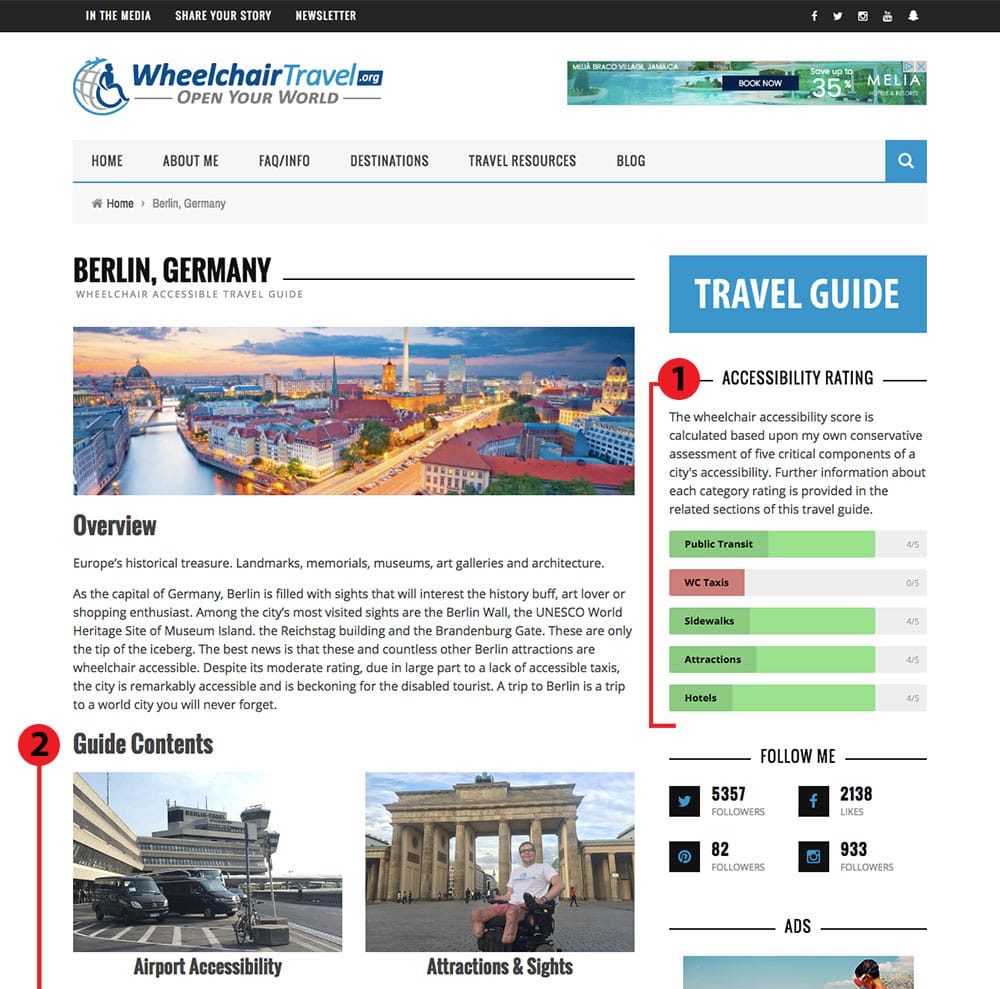
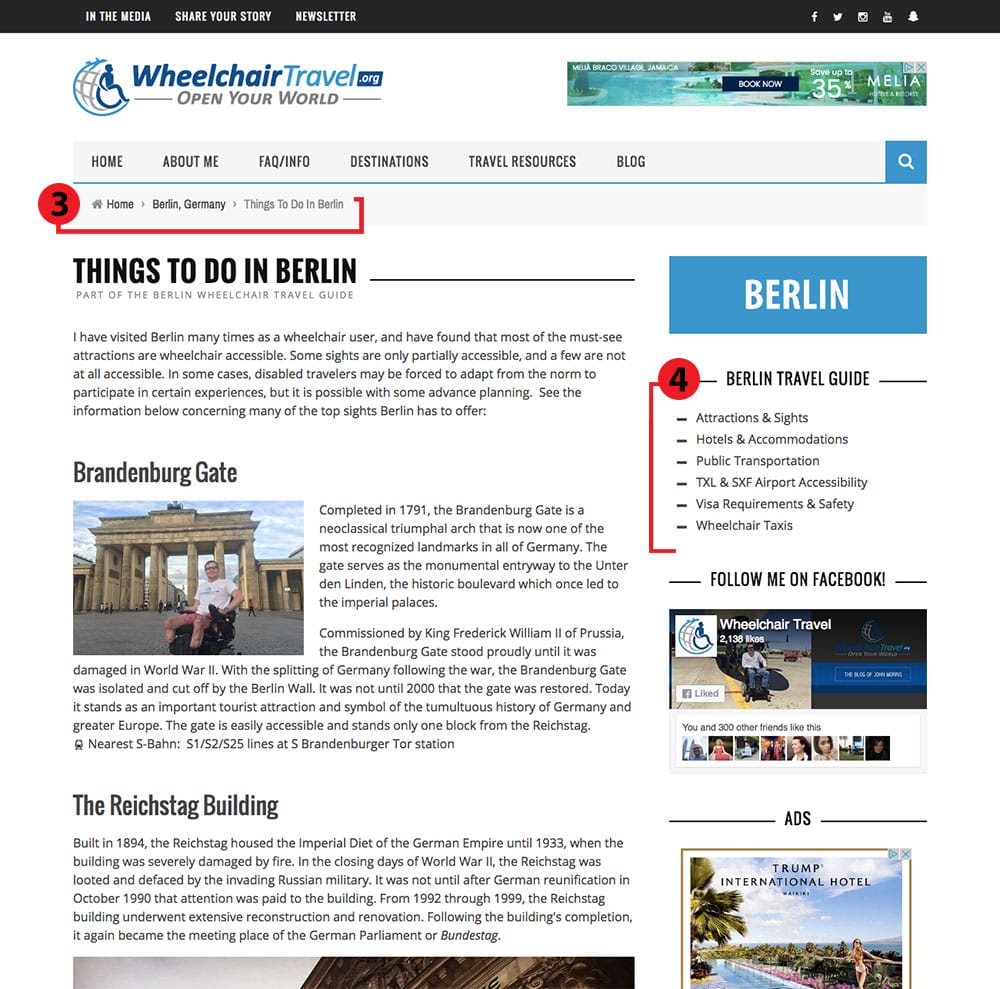
The travel guides are my favorite part of the site, and I’m really proud of them. They are the differentiator from other sites in the accessible travel space, because I write only about the places I’ve been and I do so in great detail. Sharing the world and the cities I love is a true passion of mine.
The first image above depicts the homepage for the Berlin, Germany Accessible Travel Guide, and there are two features I want to point out:
- Accessibility Rating – These are scores I have assigned for key aspects of a city’s accessibility: public transit, accessible taxis, sidewalks, attractions and hotels. The scores range from 0 to 5, with 5 being excellent. There is no exact formula to this, but I try to be conservative in my assessments. If I’m debating between two scores on the rubric, I’ll almost always choose the lower one. It’s better to be safe than sorry, right?
- Guide Contents – The travel guide homepage is meant to quickly introduce you to the city, then connect you with the detailed information about accessibility that my website is known for. The guide contents section contains links to in-depth articles about all the components of the accessibility score – and more.
The second image above is a screenshot of the page on wheelchair accessible attractions in Berlin. There are a couple new features that make navigating the guide a breeze:
- Website Path – Version 2.0 of the site brought a cool new feature that I’m rolling out to the travel guides – breadcrumbs. This section just under the navigation bar shows you exactly where you are on the site. If you want to go back to the homepage for Berlin, just click “Berlin, Germany” in the navigation path.
- Travel Guide Navigation – Each internal page of the travel guides now contain links to the other pages within the guide. If you’re reading about the things to do in Berlin, but then want to read about the public transit system, you’ll no longer need to hit the back button. Just select “Public Transportation” from the sidebar navigation. This saves you time and mobile data, while making the guides much easier to use.
It is my hope that this new travel guide ecosystem will make it easier to learn about accessible travel opportunities around the world. All of this information is at your fingertips, and I’m excited to release these new improvements to the user experience.
It will be awhile yet until the new structure rolls out to every travel guide, but these are the ones that have been updated thus far (arranged alphabetically):
- Amsterdam, Netherlands
- Bangkok, Thailand
- Berlin, Germany
- Brussels, Belgium
- Bucharest, Romania
- Dubai, United Arab Emirates
- Indianapolis, Indiana
- Kuala Lumpur, Malaysia
- Las Vegas, Nevada
- Moscow, Russia
- Munich, Germany
- Paris, France
- Prague, Czech Republic
- Providence, Rhode Island
- St. Louis, Missouri
- Washington, D.C.
That’s 16 so far, and more are on the way. It’s a tedious process, but I hope to have it completed by the end of September. I have some travel that will pull me away in the coming weeks – one trip will bring much needed content updates about Chicago, and another will take me to the City of Milwaukee for the first time. I can’t wait to share it all with you!
I want your feedback!
As I’m sure you know, a lot of the accessibility information on the internet is often a heaping pile of garbage. Outdated and inaccurate. Half of the information was written by able-bodied people who lack the perspective of disability. And even the travel bloggers with disabilities write about places they have never visited! It’s a tragedy, and something I’ve written about before. So in building my wheelchair travel guides, I have aimed to include all of the information I wish I’d had during my own trip.
I’ve blazed a few trails, in being the first to release detailed information about accessibility in cities like Brussels, Bucharest, Dubai, Kuala Lumpur and Moscow. But, I always believe there is room for improvement.
So in the comments below, let me know what you like, what you don’t like, and what’s missing in the accessible travel guides on this site. With your input, I’ll be able to make current and future content on this site more useful in opening the world for everyone. Don’t be shy – I want to hear from you!

